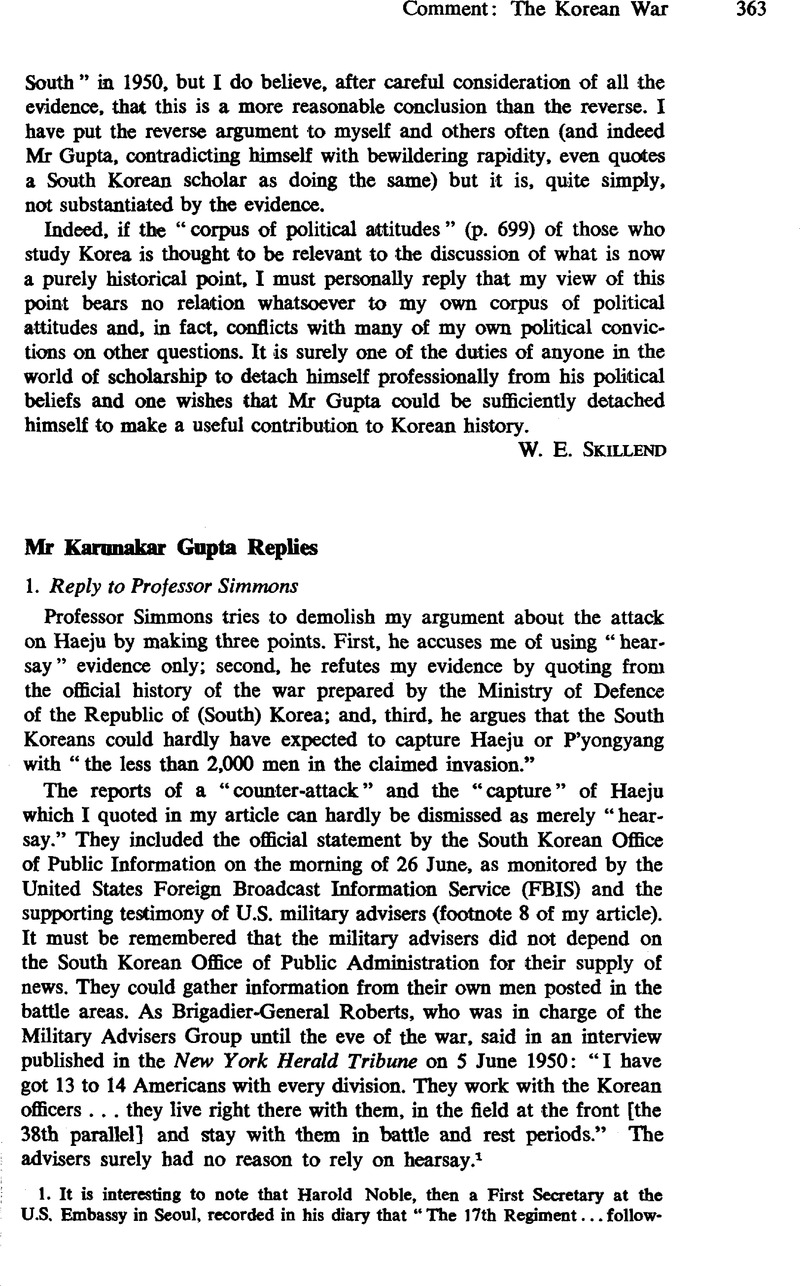Article contents
Mr Karunakar Gupta Replies
Published online by Cambridge University Press: 17 February 2009
Abstract

- Type
- Comment
- Information
- Copyright
- Copyright © The China Quarterly 1973
References
1. It is interesting to note that Harold Noble, then a First Secretary at the U.S. Embassy in Seoul, recorded in his diary that “The 17th Regiment…following the North Korean attack had driven forward into the communist-held city of Haeju in North Korea and then had withdrawn in good order.” Harold Noble, “Embassy at War,” in Baldwin, ed. Without Parallel (forthcoming).
2. Appleman, Roy, South to the Naktang North to the Yalu (Washington D.C., Office of the Chief of Military History, 1961).Google Scholar
3. A Chronicle of Principal Events Relating to the Korean Question 1945–54 (Peking: Foreign Language Press, 1954).Google Scholar
4. Ferenbach, T. R., This Kind of War (New York: Macmillan, 1963), p. 71.Google Scholar
5. See Paige, Glenn D., The Korean Decision June 24–30 1950 (New York: The Free Press, 1963), p. 130Google Scholar, cited in footnote 8 of my article.
6. BBC Summary of World Broadcasting, Part V, The Far East, No. 63, 4 07 1950Google Scholar . See also United Nations Documents S1496 and 1505/Rev. 1—both being UNCOK reports to the Secretary-General.
7 Ibid.
- 1
- Cited by




